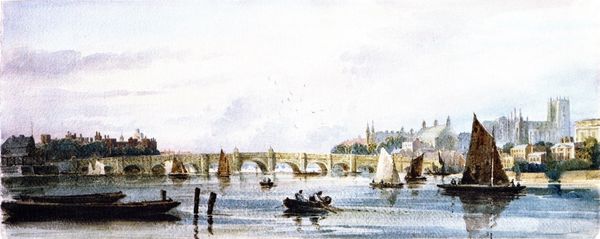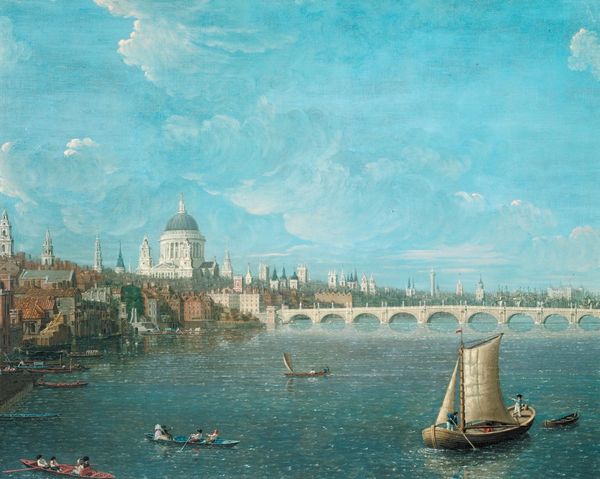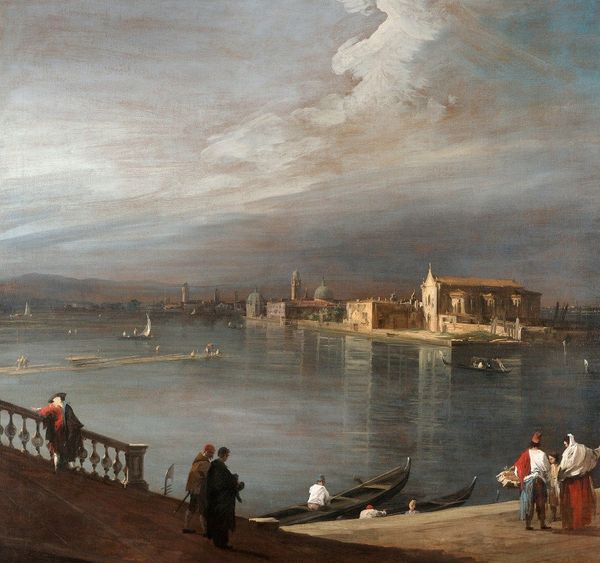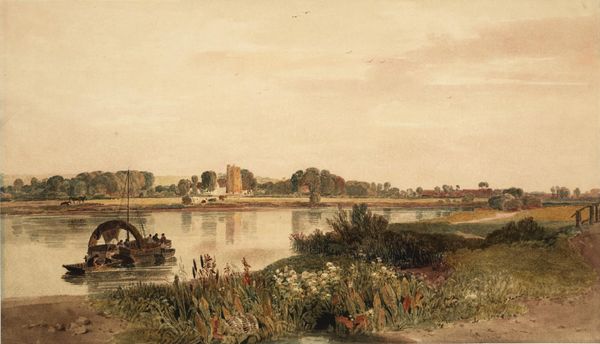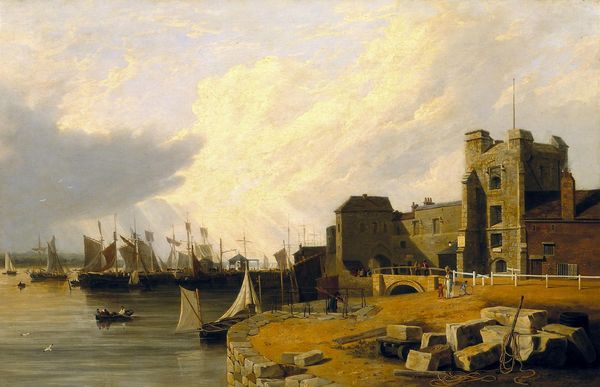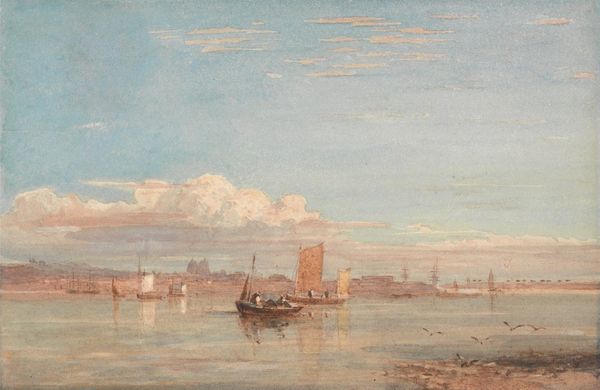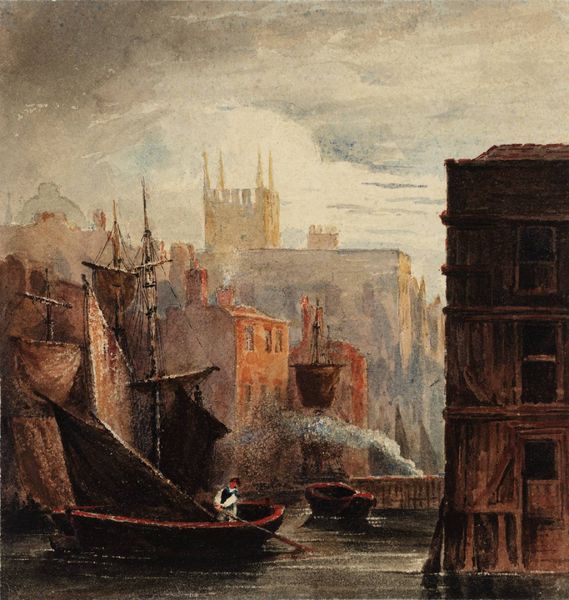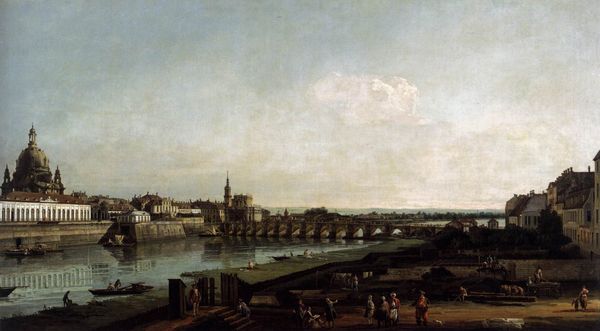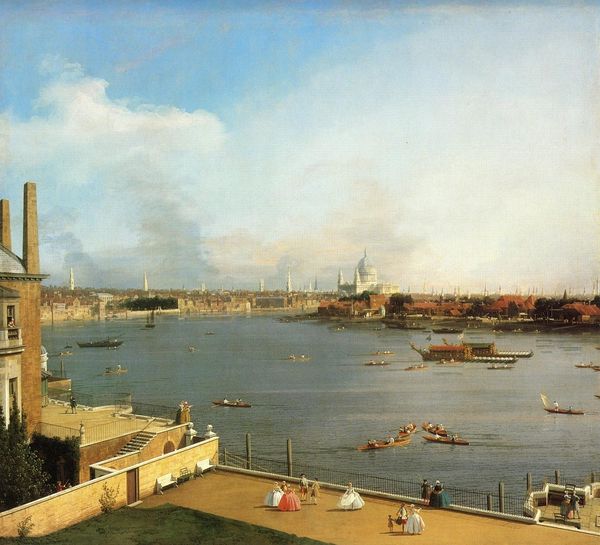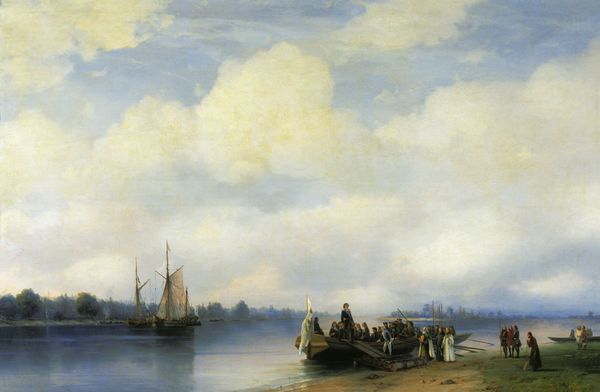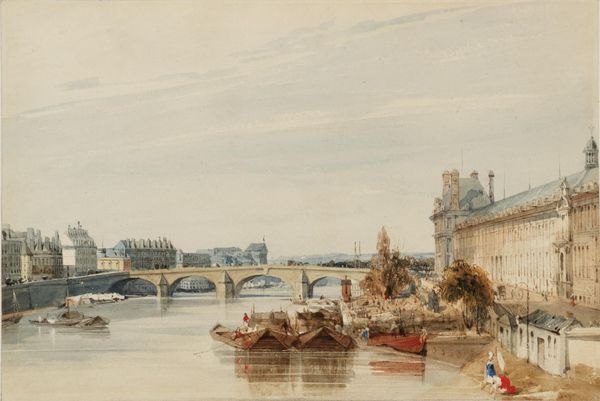
A View of the Pavillon de Flore and the Tuileries from the Seine, Notre Dame, Paris 1829
0:00
0:00
painting, watercolor
#
urban landscape
#
painting
#
landscape
#
river
#
watercolor
#
city scape
#
romanticism
#
water
#
cityscape
Copyright: Public domain
Editor: David Cox’s watercolor, "A View of the Pavillon de Flore and the Tuileries from the Seine, Notre Dame, Paris," created in 1829, offers a tranquil yet bustling urban scene. The details of the buildings are stunning, yet the colors used for both the river and the sky feel muted. What elements of this work stand out to you from a compositional point of view? Curator: From a formalist perspective, the success of Cox's composition rests in its orchestration of space and light. The artist employs the contrast between the darker foreground and the gradually lightening background to create depth. Note how the architectural forms, each distinct in shape and size, guide the viewer’s eye toward the horizon. This structured layering defines the piece. Consider also how Cox balances geometric rigidity of the architecture with the fluidity of the river, playing with the tension between the permanent and the transient. Editor: I see what you mean. The reflections in the water create this sense of movement, while the buildings stand firm. Is the color palette of primary importance? Curator: Precisely! It’s fundamental in establishing mood and atmospheric perspective. The subdued, almost melancholic tonality— achieved through the watercolor medium— further enhances this dialogue between structure and ephemerality. Note the restricted palette, primarily blues and browns, working together harmoniously in defining spatial recession. It pulls you in to appreciate how they subtly change to emphasize both form and space. Editor: This close reading has significantly altered my perspective. I see that focusing on formal elements unlocks layers of meaning in a painting. Curator: Absolutely. By attending to composition, color, and the manipulation of space, we begin to discern the sophisticated strategies that render Cox’s work not merely a picturesque view, but a meditation on form and light.
Comments
No comments
Be the first to comment and join the conversation on the ultimate creative platform.
